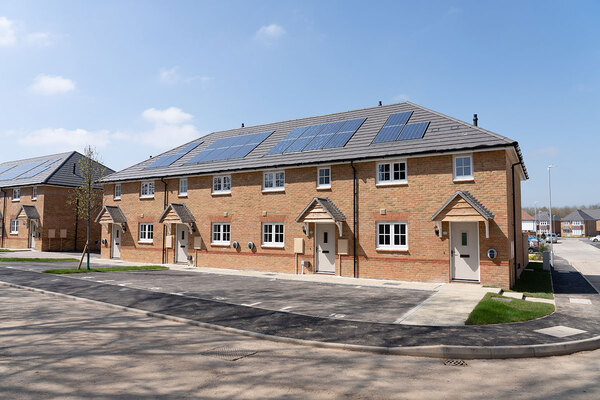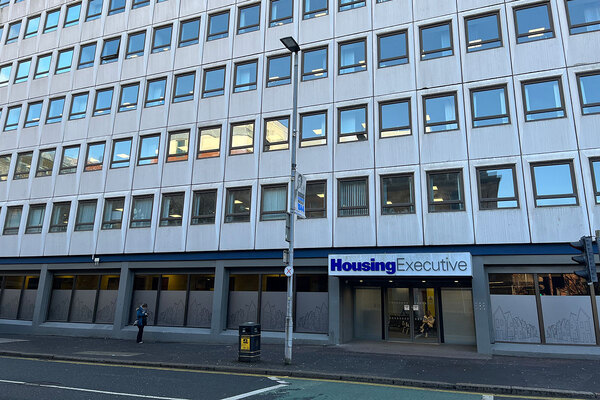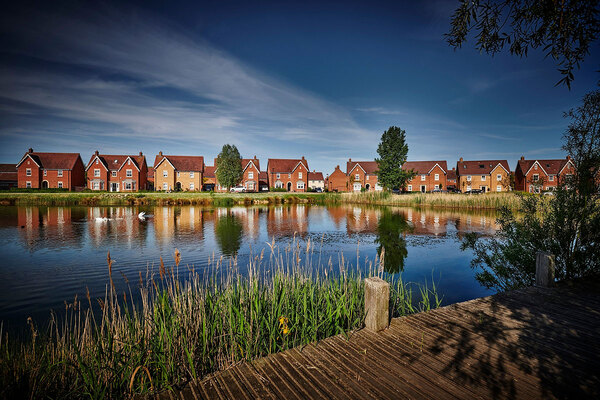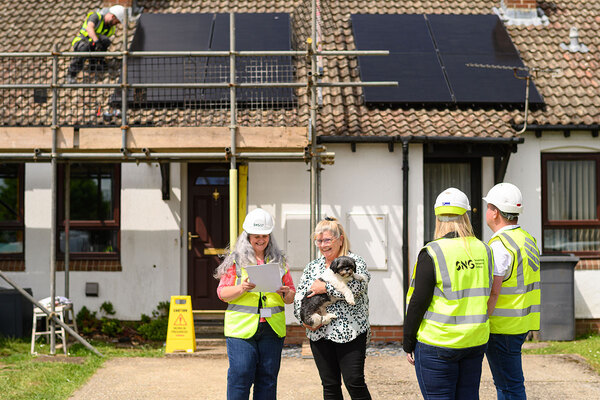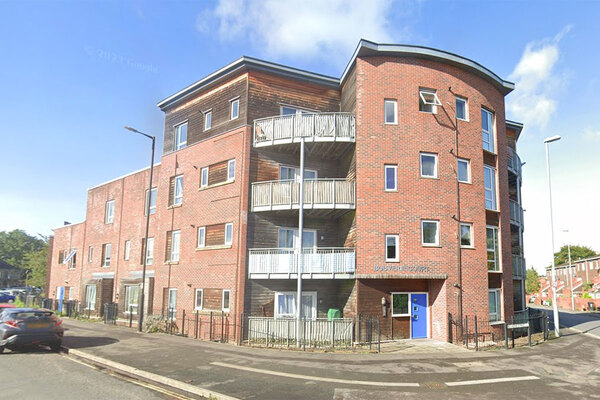You are viewing 1 of your 1 free articles
Social Housing Decarbonisation Fund: how is the roll-out going?
The SHDF has come far since it was launched as a demonstrator in 2020. James Riding asks housing associations about their experience of this net zero policy on the eve of the next, and largest, wave of the fund
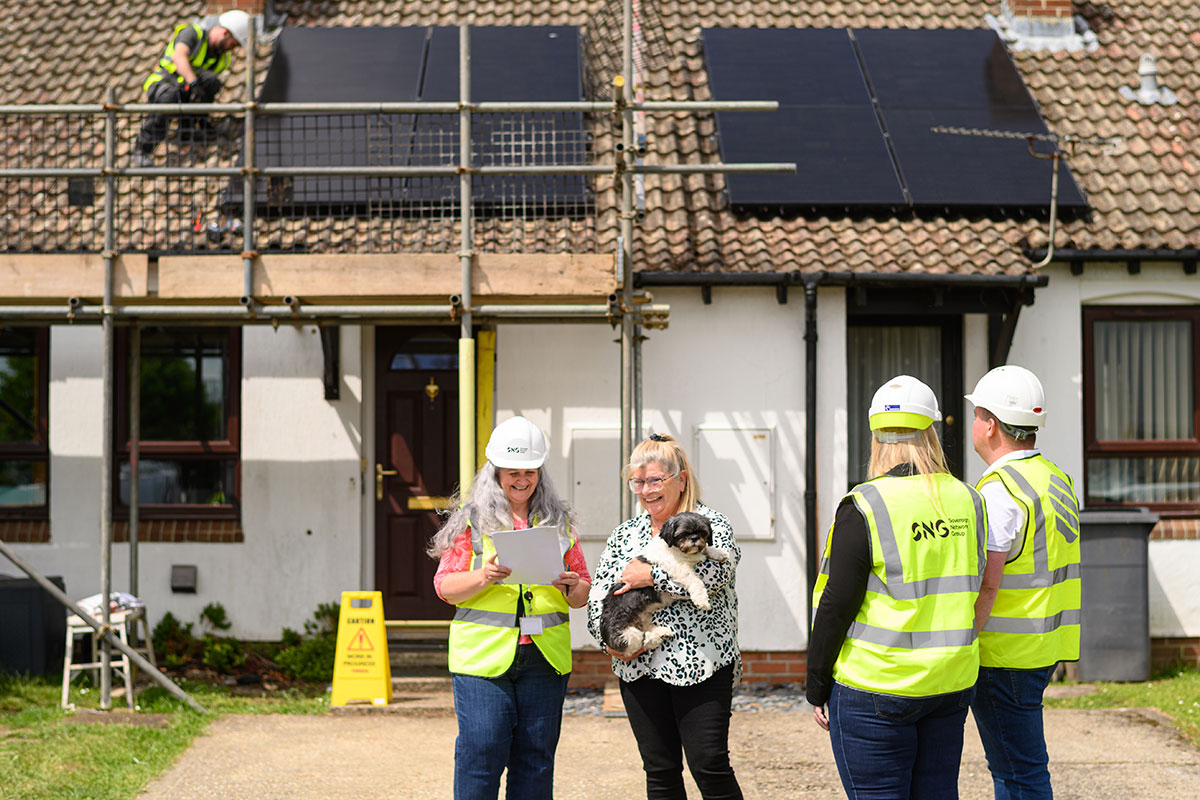
How do you make net zero happen in practice? The Social Housing Decarbonisation Fund (SHDF) is one of the biggest attempts to translate this vast, nebulous challenge into reality.
Five years on from Boris Johnson’s 2019 manifesto pledge to invest £3.8bn in the energy efficiency of social homes in England, Inside Housing wanted to check in on the last government’s flagship retrofit project from the perspective of the housing associations carrying it out.
The SHDF did not unleash £3.8bn all in one go. First came a £60m demonstrator project for local authorities in 2020. Next, in August 2021, Wave 1: landlords could bid as part of a local authority-led consortium for a share of £179m. It followed a ‘worst-first, fabric-first, lowest-regrets’ approach to improving energy efficiency in homes, with the idea that landlords match government funding to share the burden of net zero.
Then, beginning in March 2023, Wave 2.1 allocated £778m to all landlords to improve 90,000 social homes rated at Energy Performance Certificate (EPC) Band C and below. Wave 2.2 handed a further £75m to housing associations and councils in March this year.
A big step up is planned in April 2025. Wave 3 will distribute a further £1.2bn, offering a new strategic-partnership route for organisations with a proven record of delivery, an optional subsidy for installing green heat systems and added flexibility for smaller providers.
Learning curve
Sovereign Network Group (SNG) is making considerable use of the SHDF. The housing association was created in 2023 from the merger of Sovereign and Network Homes, both of which had secured cash from Wave 2.1 of the fund for retrofit projects in South West England and Brent in north-west London.
Between them, they won nearly £40m to fund work on more than 3,000 homes.
By February 2024, Sovereign’s side of the group had completed 1,007 retrofit surveys and issued 929 plans to residents, while Network had finished 1,129 surveys and 144 designs and started a 26-home pilot in early February.
“We were tentative [on applying for the fund], because you don’t want to fail at the first,” says Jim Dyer, director for the built environment at SNG. “But the messaging was, ‘You’d better raise your bids, because this money might not be there [later]’.”
Leila Musa, now head of sustainability and strategic asset management at SNG, led Network’s bid before the merger. She says it ruled out applying for the SHDF as part of a consortium, to avoid “legal issues, delay [and] the risks that it would cause”.
When bidding, she considered where the landlord needed to carry out planned maintenance works, “so it’s aligning our asset management strategy and our net zero strategy”.
Crafting an SHDF bid is very labour intensive: there are 6,052 data points on the submission spreadsheet. Housing associations also have to provide a thorough energy efficiency analysis of their homes.
Network Homes commissioned its report from data company Parity Projects, while Sovereign picked Sero, a platform that forecasts how energy consumption, bills and carbon emissions will decrease for each home from 2023-38.
Bids also require a project plan, milestones, team capacity, a value for money analysis and a risk register.
Raven Housing Trust is a Surrey-based housing association of around 7,000 homes that is making use of the SHDF. Raven used Wave 1 to improve 26 of its properties in a consortium with Accent Group at a cost of £600,000. Now it is using Wave 2.1 to improve 50 of its properties in a consortium with local authorities (which together are retrofitting 150 homes).
“We learned a lot from Wave 1,” says Anthony Day, sustainability manager at Raven. The biggest issue was communicating with residents.
“There was probably a bit too much focus on the big picture around net zero carbon and talking in rather large terms.”
History of the SHDF
Demonstrator (launched 2020): £60m; only for local authorities, to retrofit 2,100 homes.
Wave 1 (launched 2021): £179m; for local authority-led consortia, fabric-first approach.
Wave 2.1 (launched 2022): £778m; for both councils and housing associations, to retrofit 90,000 social homes. Minimum bid level of 100 homes; applicants must fund at least 50% of projects. Projects must be completed by June 2025.
Wave 2.2 (launched 2023): £75m; for all landlords, to improve 8,800 homes; funding allocated to smaller housing associations
Wave 3 (to be announced): £1.2bn; for all landlords; new strategic-partnership route for proven organisations; optional subsidy for installing green heat systems; added flexibility for smaller providers. Will run from 2025-2028.
This time, he says, they were “showing, anecdotally, the impacts it can have on electricity bills when using solar and battery, making real world examples”. A ‘show home’ where residents can come and see the technology is also part of the plans.
One of the risks that cropped up in Wave 1 projects was tenants refusing access to their homes. Mr Day explains that “we cannot force these works” on residents, but says more urgency is needed.
“We should treat it like gas safety,” he says, with some measure of enforcement. “We’ve been given a legal target [of net zero] to hit by a certain date.”
Getting and keeping a good contractor is essential, he says. “A once-a-month [update] for me is not regular, and you end up hearing about stuff too late... So I’m a weekly pain in the bottom for my development contractor to ensure that I know what’s happening, and we can act on things quickly.”
Most participants in the scheme are taking a fabric-first approach to retrofit, opting for external wall insulation and mechanical ventilation to keep the newly insulated properties cool and free of mould. Raven is installing solar panels and battery storage, while SNG is using its own funding to provide smart home sensors, after being turned down for extra digitalisation funding from the SHDF.
There is a real opportunity to use the planned retrofit works to gather more data, says Mr Dyer. “Fuel poverty in action; [tackling] damp and mould before it happens.”
How long the average retrofit takes – and therefore how long residents must endure the disruption – varies. Mr Day says six to eight weeks is a realistic estimate of the timescale for a deep retrofit, while Ms Musa says you could finish a complete retrofit of one property in two to three weeks, if all goes well, and with good co-ordination between contractors.
Costs can rise when landlords start work and discover additional repairs are needed. Several G15 members have done trials and “they all overran on costs”, says Patrick Flynn, director of compliance and planned works at SNG. “A lot of it is ‘let’s do the roof while we’re there’. And there is a case for it.”
Looking ahead
A 2023 report by thinktank the Centre for Social Justice argues that the government should extend the funding timelines to enable a more “strategic” and “cost-efficient” approach.
The National Housing Federation has called for the government to release the full £3.8bn allocated to the fund in one go.
“That would have been better from the start,” says Jamie Ratcliff, chief communities and sustainability officer at SNG. “Definitely, our ambitions would have been raised.” What SNG ended up with, he says, was “government saying, ‘Here’s what you can deliver in two years’, [which is] incredibly prescriptive… and you have to sign in blood that you definitely will deliver it.”
A key obstacle to retrofitting at scale is the nascent state of the contractor industry.

“Whether it’s fabric or process or procurement or trades or training, if the government sows seeds of doubt and delays and doesn’t believe, the supply chain won’t invest,” Mr Dyer says. The funding system is “fragmented, it’s broken, it’s de minimis in the scale of what we need, it’s uncertain”, he says.
The timing of the programme showed a lack of joined-up thinking from the previous government, says Mr Ratcliff. The deadline for bids for Wave 2.1 was less than a week before ministers would announce what the social rent cap would be for 2023: 3%, 5% or 7%. This created “quite a material level of uncertainty” for how much each housing association could afford to stump up for its retrofit ambitions, he says.
Eventually, officials said “we will let you reduce your bid if the rent cap turns out to be worse than you expect”, Mr Ratcliff recalls.
“Demanding spending of money before a certain deadline creates a bottleneck in the marketplace,” says Mr Day. “All the contractors are fully aware of that bottleneck, so you’re creating a false market.”
The government has outsourced the delivery of funding to consultants, such as Turner & Townsend.
“The representatives have been excellent,” Mr Day adds. “I just think the DESNZ [the Department for Energy Security and Net Zero] has not thought some of the practical realities through as well as it could.”
This, in a microcosm, is the SHDF: big ideas bumping up against practical realities. But it is heartening to see more flexibility being introduced in Wave 3, suggesting that officials have listened to some of these criticisms.
“Positive adjustments” such as the strategic partnerships route and allowing small landlords to make applications for fewer than 100 homes show that “DESNZ has taken on board feedback from the sector and should improve delivery over the coming years”, says Matthew Scott, policy and practice officer at the Chartered Institute of Housing.
Labour may have “stood down” its promise to spend £28bn a year on environmental projects, including £6bn a year on improving energy efficiency in homes, but the new government has vowed to be “laser-focused” on decarbonisation.
Inside Housing understands that the new Labour government will proceed with the SHDF and that dates for the application launch of Wave 3 will be confirmed in due course.
Sir Keir Starmer’s general election manifesto pledged to invest an extra £6.6bn over the next parliament to retrofit five million homes of all tenures, doubling the current planned government investment.
The Warm Homes Plan will offer grants and low-interest loans to support investment in insulation and other improvements such as solar panels, batteries and low-carbon heating, to cut bills. The government will partner with combined authorities and local and devolved governments to roll out the plan.
A DESNZ spokesperson says: “Our Warm Homes Plan will support investment in insulation and low-carbon heating, upgrading millions of homes over this parliament.
“By providing £13.2bn of investment to deliver this plan, we will protect bill-payers permanently, reduce fuel poverty and get the UK back on track to meet our climate goals.
“We will be working closely with councils to bring green upgrades to their communities.”
Recent longform articles by James Riding
Dagenham fire: what happened and what we know about the building
A fire at a block of flats in Dagenham, east London, on Monday has sparked fresh debate about the slow progress of cladding remediation in the UK. James Riding runs through what we know so far
Peter Denton discusses the Homes England review and Section 106 jitters
Homes England’s chief executive tells James Riding that a new government review is a “call to arms” for the agency to take a more hands-on role in development
The man who runs Homes England’s Affordable Homes Programme
Shahi Islam speaks to James Riding about his new role as director of Homes England’s Affordable Homes Programme and his desire to be “more front-facing” in the sector
Sign up for the IH long read bulletin
Already have an account? Click here to manage your newsletters




